A 30 Year Journey to CS
by Sherry W. Holloway | April 25,2017
Sherry Holloway teaches computer science at Eagle Woods Academy for the DeKalb County School District. In the summer of 2016, Ms. Holloway attended CSPdWeek in Golden, CO and took Exploring Computer Science (ECS), a free, high-quality professional development course made possible by Infosys Foundation USA. She shares her 30-year journey on becoming a teacher with us.
Who would have thought it would take 30 years to reach a life-long dream?
I always wanted to teach, but after graduating from college in December 1985, things didn't go quite as planned. A full-time job, family obligations including one husband, two children, and three grandchildren postponed my dream for 30 years.
Since I had always wanted to teach, 2015 marked the year for make this dream a reality. At age 63, in December 2015, I completed the TAPP (Teacher Academy for Preparation and Pedagogy).
Today, I am a proud teacher for the DeKalb County School System in the State of Georgia. I am now into my 3rd year of full-time teaching and have found it to be more rewarding than anything I’ve ever been paid to do. My satisfaction comes from knowing that I am giving back.
Over the years, I have seen a lot of changes in how information is received, processed and disseminated. I chose to teach business communication because this is where my expertise lies. Yet, I always wanted to give my students something more.
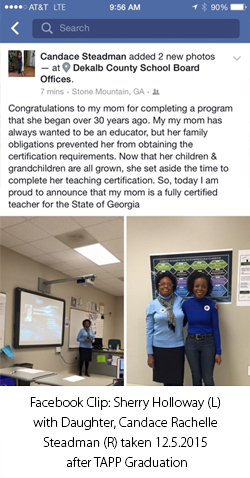
When I saw the opportunity for professional development in computer science (CSPD) in Golden, Colorado during the summer of 2016, I knew this was what I needed to bring my students into the future – into the age of computer science (CS).
My CSPD week experience in July 2016 in Golden, Colorado was awesome! It was much more than I ever anticipated. The instructors were very knowledgeable and modeled best teaching practices that we could use immediately in our classrooms. The resources we received during the PD, especially the teachers’ manual is alone worth its weight in gold, and I use it every day. The manual clearly explains what we need to do, day-by-day, in the classroom. In addition, if it had not been for my CS PD experience, I would never have known about valuable resources such as ExploringCS, NCWIT, and CS Unplugged.
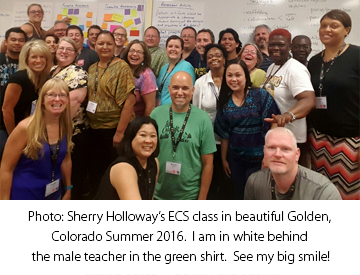
I will be the first to admit that I am learning CS along with my students and this is what keeps the subject matter fresh and interesting. While I do not keep in touch with other teachers who attended during the summer PD, it is comforting to know, if I have a question, they are only a click away through our on-line PD and ExploringsCS resources.
Incorporating CS into my classroom has been both easy and challenging. Easy because my students are naturally drawn to anything that allows them to use a PC. CS makes kids think about using computers in ways they have never thought about before. For example, I am able to show my students how computers can be used for more than just playing video games, listening to music, or going to shopping sites. The big eye-opener for my class came when we studied binary numbers. My students began to understand the language of a computer and how a computer reads information using ones and zeros.
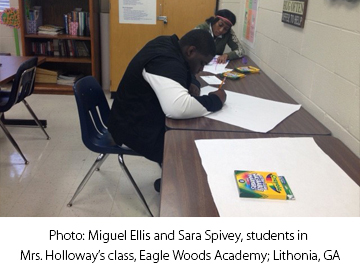
Incorporating CS in my classroom has been a huge challenge because the junior/senior high school, Eagle Woods Academy (EWA), where I teach, is unique in that students at my school have a wide range of emotional and behavioral difficulties. Many of the students at EWA are unable to function successfully in other public school environments. Our student population at EWA is extremely varied. Most have experienced significant problems in many aspects of their lives that have resulted in gaps in their knowledge base and their academic skills. Yet, even with all these difficulties, my students have embraced CS. It was a great joy to see them design their first web site when we finally got to Unit 3, Web Design. My students have learned HTML to create a web page.
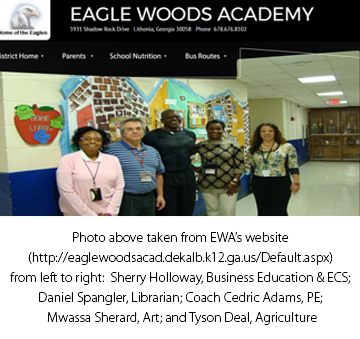
I knew my CSPD was making a positive impact on both my students and school when a fellow colleague, Ms. Hornsby, who teaches Health Science, stopped me in the hall several weeks ago to say, “Isaiah taught us all how to code in binary today!” She said Isaiah had the entire class including herself and Ms. Roberts, the para-professional, writing messages in binary code. Ms. Hornsby was truly amazed at Isaiah’s enthusiasm, and so was I. It was fascinating to watch my students write their own messages in binary codes and then challenge their peers to decode them.
Success in CS at my school looks like HOPE. Yes, HOPE, because CS gives kids who have huge gaps in their learning (through no fault of their own) gain a glimpse into a future that includes them as active participants. Success in CS at my school looks like HOPE because students at EWA now have desires that go beyond just playing video games to designing their own video games. When I see a student like Isaiah who grabs hold of a CS concept like binary numbers and is eager to teach it to his peers in another class, I know I have been successful.
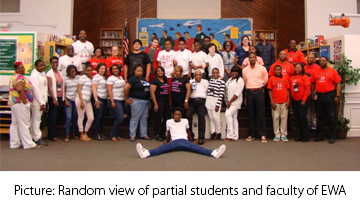
Next steps for me will be to continue to broaden my knowledge base of CS so I can bring state of the art information to the “next” generation of CS engineers. I plan to teach CS in the fall of 2017 and with the help of sponsors like Infosys Foundation USA and others, who make training at the Colorado School of Mines possible, I know I will be well-equipped to do so.

